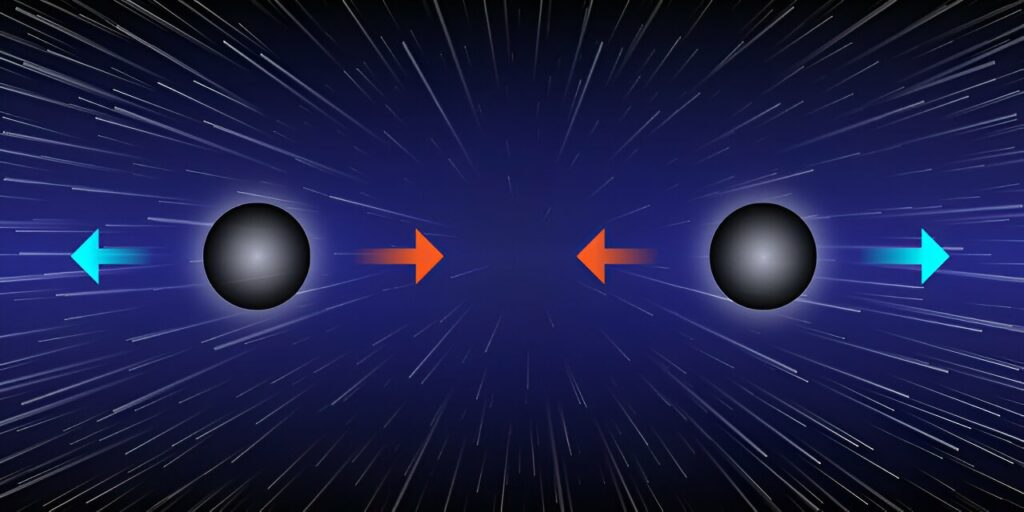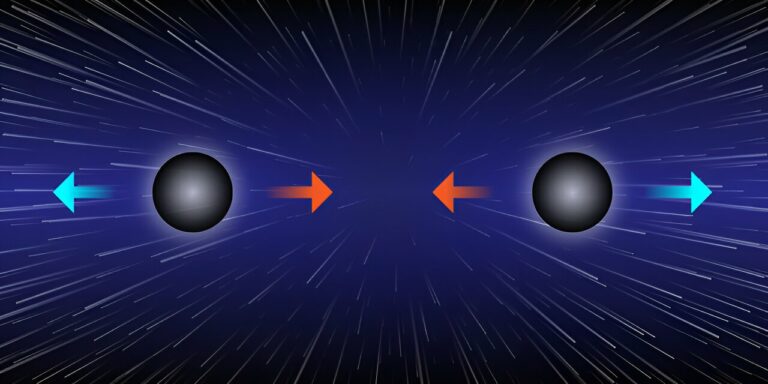“Perfect Pairs” of Black Holes Might Exist in a Continuously Expanding Universe
Researchers from the University of Southampton, along with colleagues from the universities of Cambridge and Barcelona, have demonstrated the theoretical possibility of black holes existing in perfectly balanced pairs, maintained in equilibrium by a cosmological force, resembling a singular black hole.
Black holes, immense astronomical entities with an intense gravitational pull that even light cannot escape, are extraordinarily dense. A black hole could compress the mass of Earth into a space the size of a pea. Conventional theories, rooted in Einstein’s General Relativity, typically describe static or spinning black holes existing independently in space. However, the concept of black holes in pairs, influenced by gravity attracting and causing them to collide, challenges these traditional notions.

However, this proposition holds true only if one assumes that the universe is at a standstill. What if the universe is in constant motion? Could pairs of black holes coexist harmoniously in an ever-expanding universe, appearing as a singular entity?
“The standard model of cosmology assumes that the Big Bang brought the universe into existence and that, approximately 9.8 billion years ago, it became dominated by a mysterious force, coined ‘dark energy,’ which accelerates the universe at a constant rate,” explains Professor Oscar Dias of the University of Southampton.
This mysterious force is referred to as a ‘cosmological constant.’ In a universe explained by Einstein’s theory with a cosmological constant, black holes are embedded in a cosmologically accelerated background. This alters the theoretical dynamics of how black holes can interact and exist together. Using intricate numerical methods, the team behind this recent study demonstrates that two static (non-spinning) black holes can coexist in equilibrium, with their gravitational attraction counteracted by the expansion associated with a cosmological constant.
Even in the acceleration of an ever-expanding universe, the black holes maintain a fixed distance from each other. Despite the expansion’s attempt to pull them apart, gravitational attraction compensates for it. “Viewed from a distance, a pair of black holes whose attraction is offset by cosmic expansion would look like a single black hole. It might be hard to detect whether it is a single black hole or a pair of them,” comments Professor Dias.
Professor Jorge Santos of the University of Cambridge adds, “Our theory is proven for a pair of static black holes, but we believe it could be applied to spinning ones too. Also, it seems plausible that our solution could hold true for three or even four black holes, opening up a whole range of possibilities.” This study was conducted by Professor Oscar Dias (University of Southampton), Professor Gary Gibbons (University of Cambridge), Professor Jorge Santos (University of Cambridge), and Dr. Benson Way (University of Barcelona). Their paper, “Static Black Binaries in de Sitter Space,” is published in the journal Physical Review Letters and reviewed as a Viewpoint article.
This article is republished from PhysORG under a Creative Commons license. Read the original article.
Do not forget to share your opinion with us to provide you with the best posts !




0 Comments